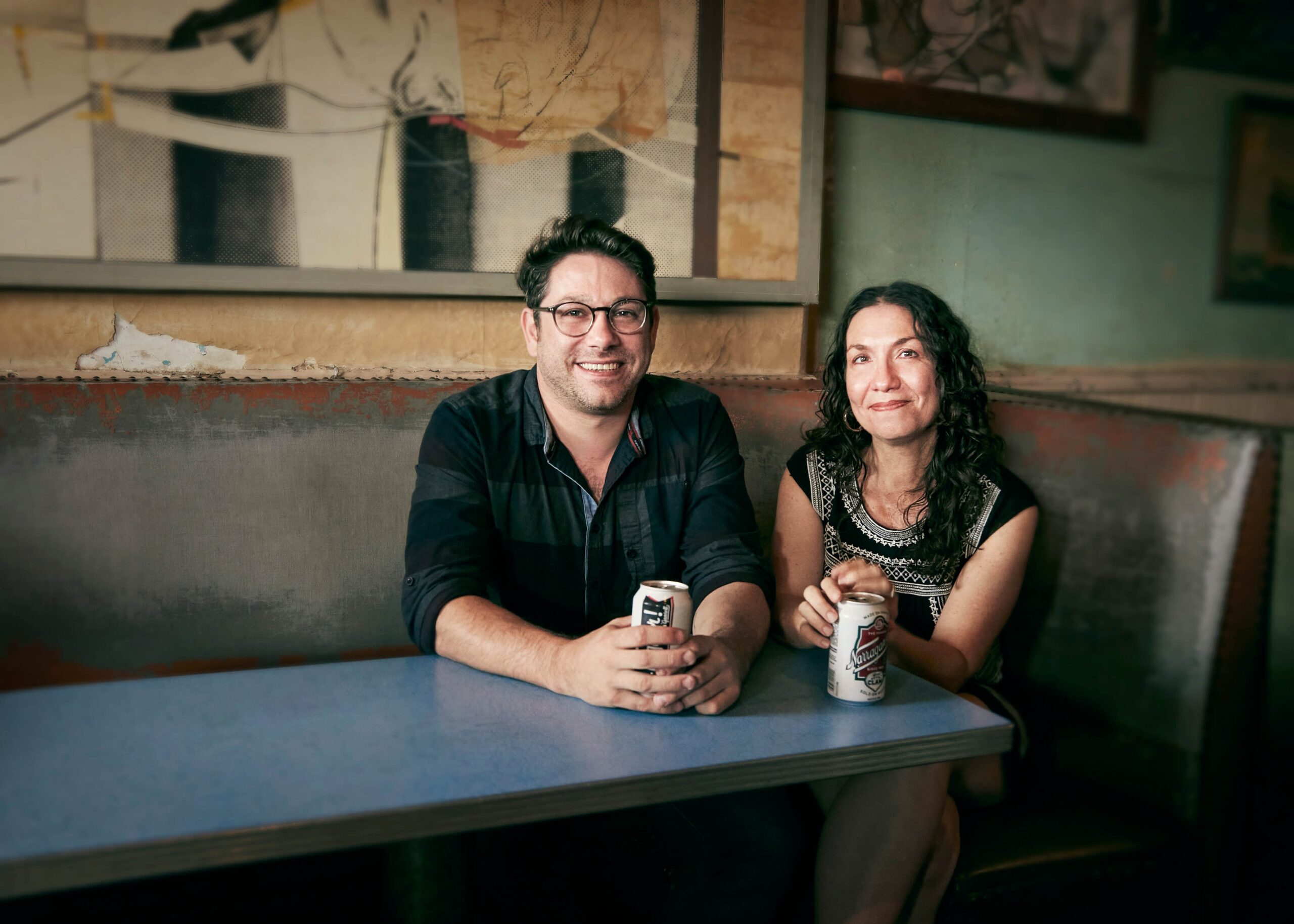Sunny’s Bar is a community staple in Red Hook. It has served local patrons and out-of-towners alike for over a hundred years, first as a lunch spot for dockworkers, and since the 1990’s as a archetypal Red Hook watering hole.
Now, it is also the subject of a play, titled The Wind and the Rain: A story about Sunny’s Bar. “The Wind and the Rain: A story about Sunny’s Bar rock-skips across the decades, reaching into the deep past and leaping into the future. Beginning at The Waterfront Museum and ending at Sunny’s Bar, it invites audiences inside the lives of the real people who became the fabric of this community. The Wind and the Rain uses immersive design technology to tell a quintessential New York Story about how the currents of time and nature shaped our lives,” writes the press release. The play begins with a story about Tone Johansen, the widow of Sunny and the owner-operator of the bar, trying to save the bar following Hurricane Sandy. The story then takes us non-linearly through generations and eras, accompanied by live music (a new local musician will join the band every night) and creative light installations.
The play, commissioned by Vineyard Theatre and En Garde Arts, is written by playwright Sarah Gancher and directed by director Jared Mezzocchi. After the two were commissioned to create a play set in Red Hook, Gancher suggested they meet at the bar to start planning.
“Our first meeting here, Sarah was like,’ Well, why don’t we go to my favorite bar, Sunny’s?’ And so we sat down here, and over the course of a week-long residency that we had in Red Hook, we slowly realized, inevitably, that it had to be a piece about Sunny’s. I would say it was very much led by Sarah; she’s brought me into this amazing community of Sunny’s that I feel very transformed by,” Mezzocchi said.
Gancher has been going to Sunny’s Bar for over 20 years, both as a patron and as a part of Sunny’s many bluegrass jamborees (she plays the fiddle), and much of the play is the result of countless stories she’s collected over the years. Johansen was also instrumental in the writing of the play. “I’ve been in her band sometimes, and I feel very, very, very lucky that when we decided that we wanted to write about Sunny’s, Tone was up for not only allowing us to write about her place but also letting me interview her over many years, opening up her archives and her heart, her beautiful knowledge base about the bar, about her family and about Red Hook,” Gancher said. “It’s been a joyous thing to research and to get to think about and know about and rock-tumble in my mind. I think I’ve written hundreds and hundreds and hundreds of pages on this, and now we have honed it down into this actually pretty compact little thing.”
This is a unique opportunity for her, she explained. “I love that I’m getting to write about and write for my Sunny’s community. I love that it feels like a gift. I love that it’s only happening during this one little span of time. It can’t extend, it can’t transfer. It’s just for this place, just for this time, just for these people.”
Mezzocchi is a newcomer, comparatively, but quickly gained an appreciation for the tight-knit community. “I run a theater in New Hampshire that has been all about community building. And stepping away from that job this year, after 10 years of running it, it occurred to me, as I immediately leaped into this rehearsal process, that the community is so important to me. And I think what’s drawn me so much to Sunny’s is even walking in as a stranger on that first day — I mean, there’s a sign out front that says, ‘Welcome home.’ It’s quite a beautiful community of people. You are thrust into a myriad of history, just a ton of objects in the space and all these people who know it from very different angles, and then you are welcomed in to have your own experience. And it’s really hard to build that, especially in the transient culture of New York,” he said.
They admit that the play isn’t the easiest to describe. But it’s a bit like a bluegrass jam, they suggest. “In a bluegrass jam, when I play a song with people, we all know the song. But I’m going to do a solo and that’s what I have to say about the song. You take a solo and that’s what you have to say about the song. Somebody else takes a solo and that’s what they have to say about the song. In this play, Sunny’s is the song, and the generations are taking their solos, and we’re learning about how they all have a different perspective, but they’re all singing about the same thing,” said Gancher.
The two Obie Award winners want their play to appeal to a broad audience — like Sunny’s Bar. But it can be a challenge to create a narrative that is inclusive to people unfamiliar with the topic at hand, while also staying true to the lived realities of the many regulars and Red Hook residents who will attend the spectacle (used here, as Gancher did when we spoke to her, in a positive sense; the play will feature a silent disco, audience engagement, video and other multimedia elements).
“I think a wide lens play about love or marriage or anger or miscommunication is inaccessible to everyone because there’s no specificity to it,” Mezzocchi noted. “In these stories, we drop into very intense moments that sometimes only last a half page and then skip time but they’re all so specific and so rooted in information that it’s actually easier to chew on these larger themes that Sarah’s trying to explore in the piece because of its specificity.”
Essentially, they summarized, it should feel like Sunny’s: “My whole goal this entire time,” said Gancher, “has been to make a play that feels like Sunny’s, which is to say that it’s a play that’s going to make you feel like you’re at home as soon as you walk in the door.
22 performances of The Wind and the Rain: A story about Sunny’s Bar will take place at The Waterfront Museum on 290 Conover St. between Sept. 28 and Oct. 27. Performances take place Wednesday–Friday at 8 p.m. and Saturday and Sunday at 6 p.m., with weekend performances moving to 5 p.m. beginning on Oct. 19.
Author
-

I’m a New York-based journalist from Sweden. I write about the environment, how climate change impacts us humans, and how we are responding.
View all posts
I’m a New York-based journalist from Sweden. I write about the environment, how climate change impacts us humans, and how we are responding.










